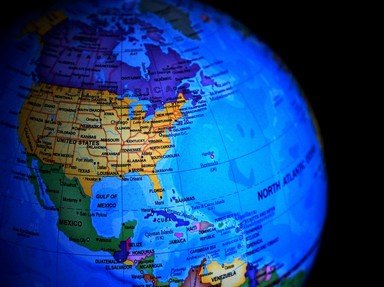Quiz Answer Key and Fun Facts
1. Palenque is located in one of Mexico's 32 states. One of the southernmost in the country, which of these states also has cities like Tuxtla Gutierrez and Tapachula, and borders Guatemala through the "Selva Lacandona" jungle?
2. In 1987, Palenque was designated a World Heritage Site for its cultural significance. The Mayan city earned this recognition, in part, because of its one-of-a-kind architecture. Which of these international organizations oversees the World Heritage Site program?
3. Roughly translated, the word "Palenque" means "place surrounded by a fence of _______ or stakes". Which word, the English equivalent of the Spanish word "madera", completes the sentence?
4. As an important Mayan city, Palenque was ruled by several noted governors in the Mayan world known as "ajaw". After the reign of Kʼan Joy Chitam I, two of his sons succeeded him as leaders of Palenque, both being the first to use the title of "K'inich", an allusion itself to the god K'inich Ajaw.
In Mayan circles, of what is K'inich Ajaw a god?
5. As is the case in many Mexican indigenous cities, food plays an important role in the culture of Palenque. One of the many specialties of their local cuisine is a special version of a traditional Mexican dish, which is a corn-based filling that can include several different ingredients, cooked and wrapped in leaves.
Which of these foods, shown in the picture, is a typical delicacy of Palenque?
6. Bodies of water can be found in various points of Palenque. Which of these rivers, one of most abundant in both Mexico and Guatemala, can be found near Palenque and passes through several cities?
7. The Temple of the Inscriptions, which in large part is a reason why Palenque has World Heritage Site status, is one of the highlights of the Mayan city. Which of these is NOT a defining aspect of the temple?
8. Palenque's majestic ruins have been preserved because of the history they tell of the Mayan people who lived there. In addition to the Temple of the Inscriptions, which other temple complex was built to honor Pakal and was named after a shape later found in the structure? (think of Jesus Christ)
9. There is a multitude of temples, palaces, and museums to visit at Palenque. One of them is named after an animal that the Mayans worshipped as a symbol of power and authority, which is why its shape is carved markedly on the structure.
What animal lends its name to the temple?
10. The city of Palenque is constantly explored by experts who insist there are even more archaeological and historical jewels to be found. Among the many attractions within the archaeological park of Palenque is a patio used for "juego de pelota", a ball sport popular among Mesoamerican cultures.
Is it true or false that the game sometimes involved human sacrifices?
Source: Author
Lpez
This quiz was reviewed by FunTrivia editor
stedman before going online.
Any errors found in FunTrivia content are routinely corrected through our feedback system.
